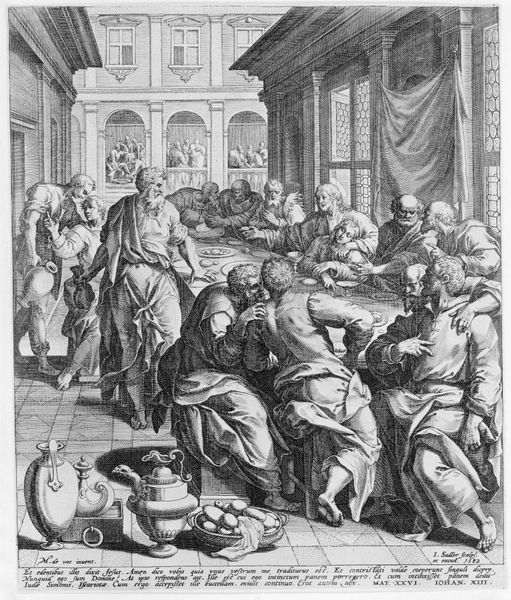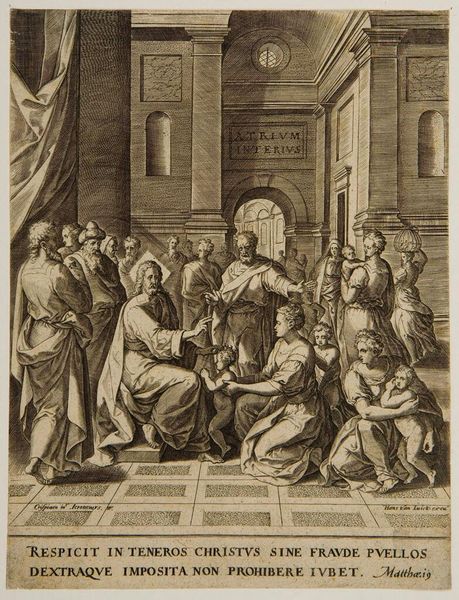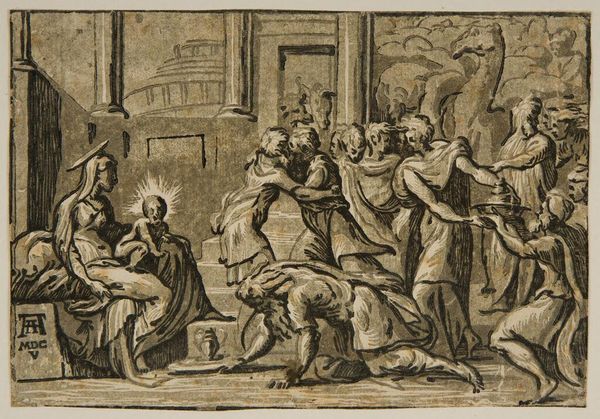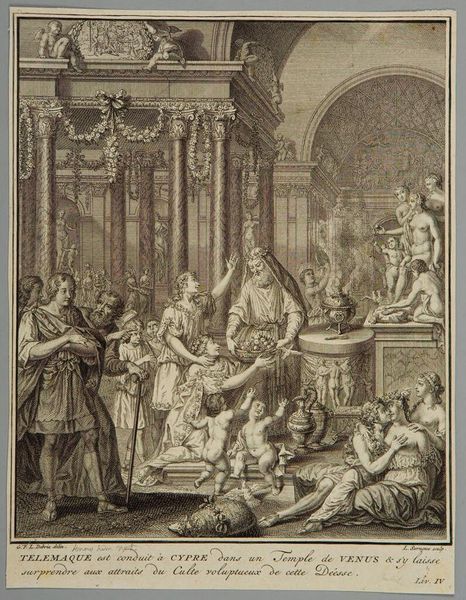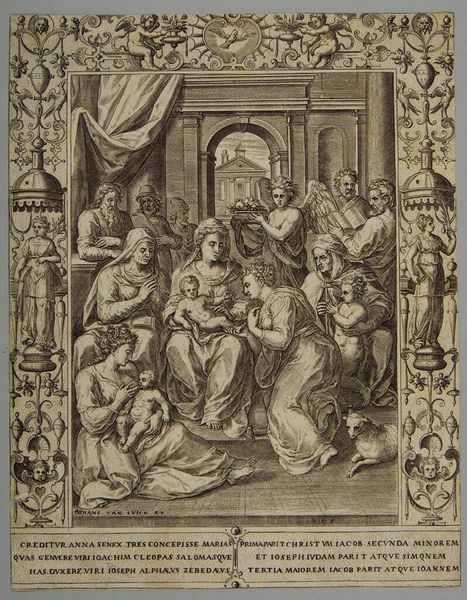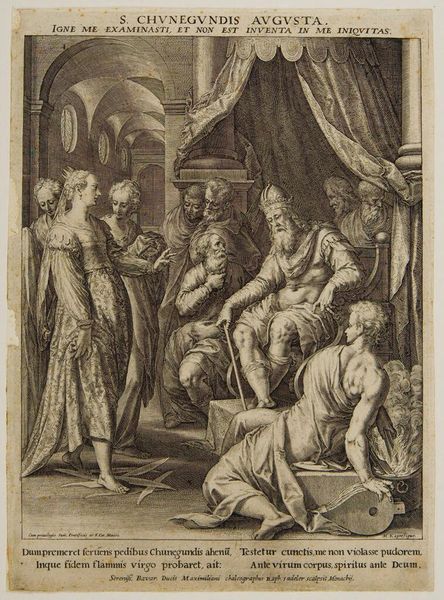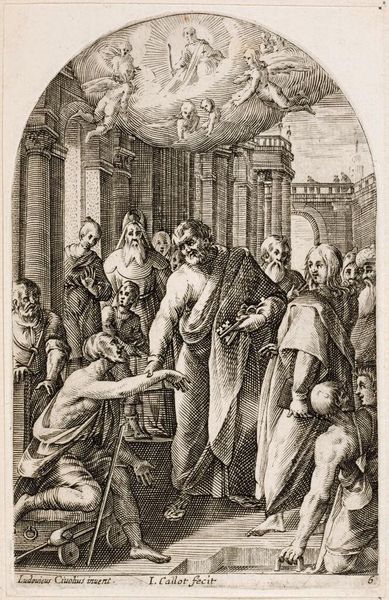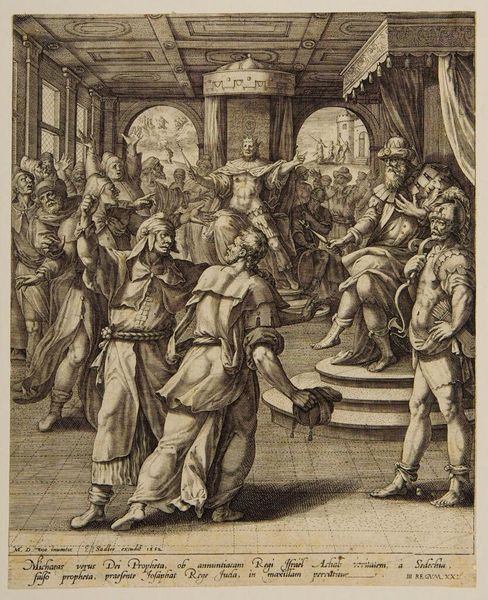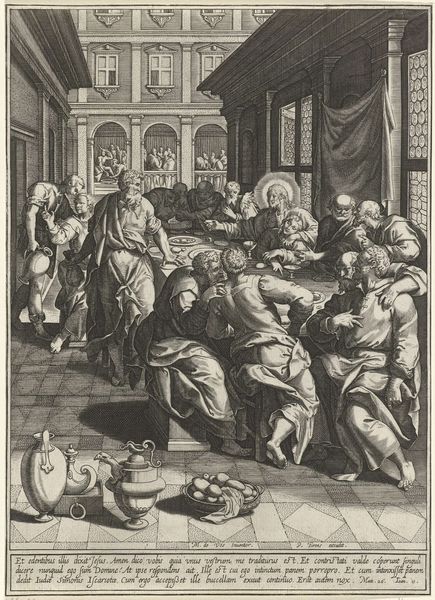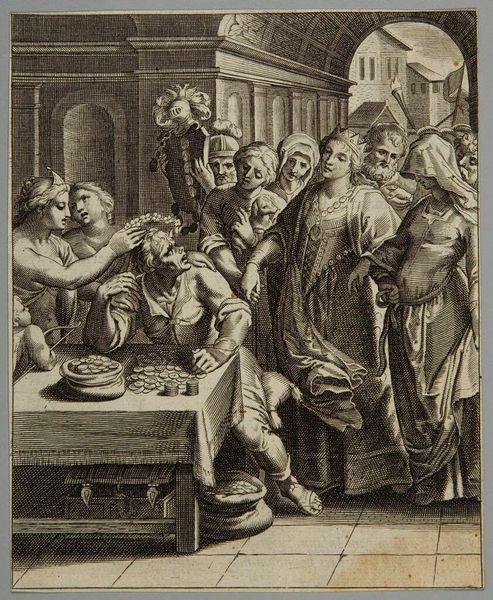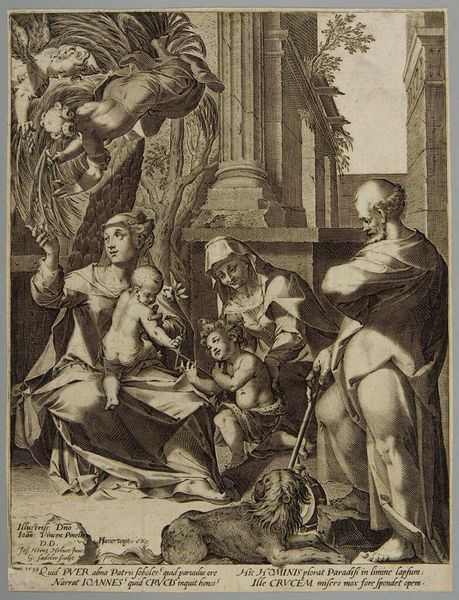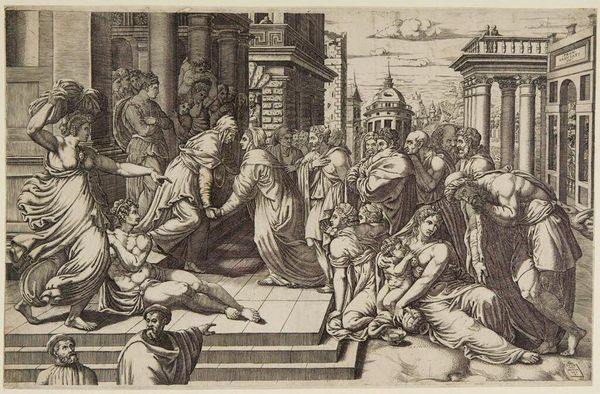
Copyright: CC0 1.0
Curator: This is "Last Supper," an engraving by Johann Sadeler I, dating back to the late 16th century. The print is currently part of the Harvard Art Museums collection. Editor: The initial impact is one of bustling energy, almost chaotic. The figures seem to crowd the space, all rendered in meticulous detail. Curator: As a print, the material production is fascinating. Consider the labor involved in carving those lines into the plate, the controlled process to achieve that level of detail, and the mass production possible thereafter for distribution. Editor: And the scene itself, depicting a pivotal moment laden with religious and cultural significance, must have been widely consumed and interpreted by diverse audiences. The image became a tool for instruction and reinforcement of doctrine. Curator: Absolutely. The print's function as a reproducible object challenges the traditional notions surrounding unique artwork. It's about access and dissemination of ideas through materiality. Editor: I find myself drawn to how the artist captured the narrative drama, the impending betrayal, and the reactions of those present. It highlights the socio-political role art plays in shaping perspectives on religion. Curator: Seeing it through the lens of material culture gives it a grounded quality, shifting from divine aura to tangible object of labor and consumption. Editor: And my perspective highlights how that consumption contributes to belief systems. It seems we are both looking at the same object through different lenses.
Comments
No comments
Be the first to comment and join the conversation on the ultimate creative platform.
